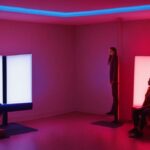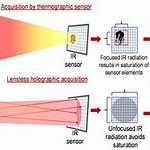https://www.youtube.com/watch?v=S5zmQCrcS80
treat seasonal affective disorder
Light therapy is a treatment that uses exposure to certain wavelengths and intensities of light to improve a person’s mood and reduce symptoms of seasonal affective disorder (SAD). SAD is a type of depression that is typically experienced during the fall and winter months when there is less daylight. Light therapy is a safe and effective way to combat the symptoms of SAD by providing a daily dose of bright light that mimics natural sunlight. This introduction will explore how light therapy works, its benefits, and how it can be used to treat SAD.
Contents
What is Light Therapy?
Light therapy, also known as phototherapy or bright light therapy, is a non-invasive treatment that uses specific wavelengths of light to stimulate biological processes in the body. It is commonly used to treat a range of conditions, including seasonal affective disorder (SAD), depression, sleep disorders, and skin conditions such as psoriasis.
How Does Light Therapy Work?
Light therapy works by exposing the body to bright light, typically using a lightbox or other light-emitting device. The light stimulates cells in the retina of the eye, which in turn sends signals to the brain to regulate the body’s natural circadian rhythm. This can help to improve mood, increase energy levels, and regulate sleep patterns.
What are the Benefits of Light Therapy?
Light therapy has been shown to have a range of benefits for both physical and mental health. Some of the most commonly reported benefits include:
- Improved mood and energy levels
- Reduced symptoms of depression and anxiety
- Improved sleep quality and duration
- Reduced symptoms of SAD
- Improved skin health and appearance
- Reduced pain and inflammation
What are the Risks of Light Therapy?
While light therapy is generally considered safe, there are some potential risks and side effects to be aware of. These can include:
- Eyestrain or headaches
- Nausea or dizziness
- Skin irritation or rash
- Interference with certain medications or medical conditions
Before starting light therapy, it’s important to talk to your doctor to determine if it’s safe for you and to develop a treatment plan that is tailored to your individual needs.
The Science Behind Light Therapy
While the exact mechanisms behind light therapy are not yet fully understood, research has shown that exposure to bright light can have a range of biological effects on the body. Some of the key scientific findings include:
One key takeaway from this text is that light therapy can have a range of benefits for both physical and mental health, including improved mood, energy levels, and sleep quality, as well as reduced symptoms of depression, anxiety, and seasonal affective disorder. However, it’s important to be aware of potential risks and side effects, such as eyestrain and skin irritation, and to talk to a doctor before starting light therapy. Additionally, following manufacturer’s instructions and using the device consistently can help to optimize results.
Effects on the Brain
Studies have shown that exposure to bright light can increase the production of serotonin in the brain, which is a neurotransmitter that regulates mood and can help to alleviate symptoms of depression and anxiety. Additionally, light therapy can also stimulate the production of melatonin, which is a hormone that regulates sleep and can help to improve sleep quality and duration.
Effects on the Skin
Light therapy has also been shown to have a range of benefits for skin health. Specifically, exposure to certain wavelengths of light can help to stimulate collagen production, reduce inflammation and redness, and improve the overall appearance of the skin.
Effects on Pain and Inflammation
Finally, research has also suggested that light therapy can help to reduce pain and inflammation in the body. Specifically, exposure to certain wavelengths of light can help to stimulate the production of endorphins, which are natural painkillers in the body.
How to Use Light Therapy
If you’re interested in trying light therapy for yourself, there are a few things to keep in mind. First, it’s important to talk to your doctor to determine if it’s safe for you and to develop a treatment plan that is tailored to your individual needs. Additionally, it’s important to use a high-quality lightbox or other light-emitting device that has been specifically designed for light therapy. Finally, it’s important to follow the manufacturer’s instructions carefully and to use the device as directed.
Tips for Using Light Therapy
Some additional tips for using light therapy include:
- Use light therapy in the morning to help regulate your natural circadian rhythm.
- Start with shorter sessions of around 10-15 minutes and gradually increase the duration over time.
- Use light therapy consistently, ideally on a daily basis, to see the best results.
- Keep the lightbox or other device at a distance of around 16-24 inches from your face.
- Use light therapy in combination with other treatments, such as medication or therapy, as recommended by your doctor.
FAQs for Light Therapy
What is light therapy?
Light therapy, also known as phototherapy, involves the use of a light box or other device that emits bright light to simulate natural sunlight. This therapy is used to treat various conditions, including seasonal affective disorder (SAD), sleep disorders, depression, and skin conditions such as psoriasis and eczema.
Light therapy works by triggering specific biological responses in the body. Exposure to bright light affects the production of melatonin, a hormone that regulates sleep and circadian rhythm. It can also stimulate the release of serotonin, a neurotransmitter that influences mood, appetite, and sleep. Light therapy can help regulate the body’s internal clock, which can improve sleep, mood, and cognitive function.
Is light therapy safe?
Light therapy is generally safe when used as directed. However, it can cause some side effects, such as headaches, eye strain, and insomnia. People with certain medical conditions, such as bipolar disorder, migraines, or retinal disorders, should avoid light therapy or use it only under medical supervision.
How long should I use light therapy?
The duration of light therapy varies depending on the condition being treated and the type of device being used. For SAD, it is typically recommended to use the light box for 30 minutes to 2 hours per day. For skin conditions, the duration and frequency of treatments may vary based on the severity of the condition and the recommendation of a healthcare professional.
Where can I get a light therapy device?
Light therapy devices can be purchased online, in specialty stores, or through healthcare providers. It is important to choose a device that is approved by a reputable organization such as the FDA and to follow the instructions carefully to ensure safe and effective use.
Can I use light therapy at home?
Yes, many light therapy devices are designed for home use. However, it is important to follow the instructions carefully and consult with a healthcare professional before starting light therapy, especially if you have any medical conditions or are taking medications that may interact with light therapy.

.jpg)

.jpg)



